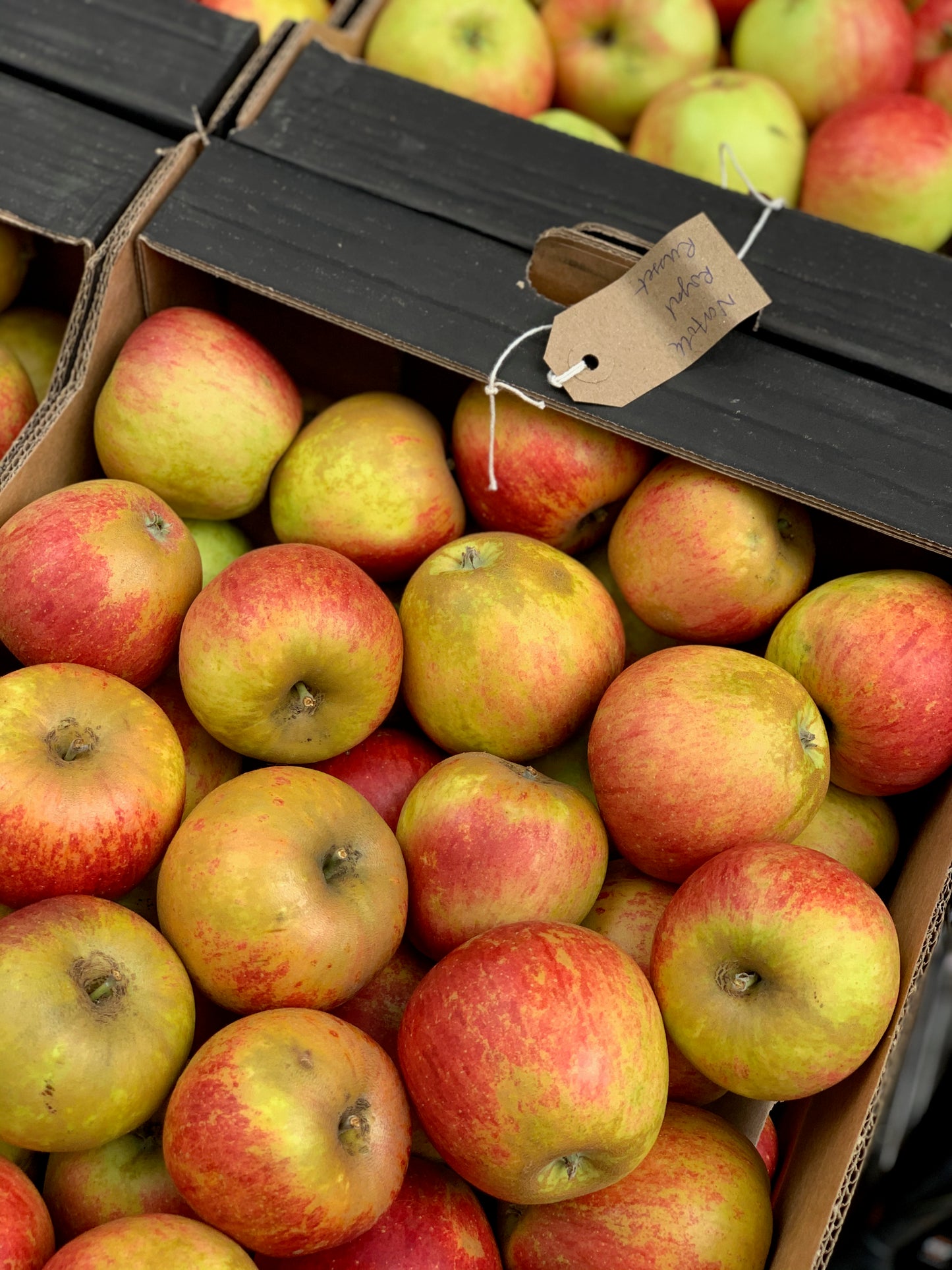


|
Meet the Designer: Elizabeth Friedländer
We love German-born Elizbeth Friedländer for her vibrant pink and green geometric design that adorns our Raspberry Deluxe, Kai’s favourite jam, no less. Her sharp-edged pink flowers, from another Curwen Press pattern paper, screamed raspberries to us, as did that colour combo.
Friedländer, who fled Berlin in 1936, is fascinating but her name is less well known than her artwork, which featured on many mid-century titles from the likes of Penguin, Thames & Hudson, Italy’s Mondadori and Mills & Boons. She even invented her own font - Elizabeth - which was commissioned by the Frankfurt-based Bauer Type Foundry in 1928 and is still in use in digital form.
 What we’re eating
Raspberry Deluxe, of course! Kai likes his spread thickly over salted butter on sourdough fresh from the bakery. The taste takes him back to his childhood: his father grew raspberries and would use each summer’s crop to make jam.
As we’re talking apples this week, Kai’s family also had an Egremont Russet tree, which made wonderful jam. It’s a little bit sombre, but we still have a jar of Mr Knutson senior’s apple jam dating back to 2008, which was the last batch he made, which we can’t bring ourselves to eat. It’s nice to see it there, well preserved!
  |

After a stint in Milan, she wound up in London on a Domestic Service visa afforded to her by the Religious Society of Friends, or Quakers, who were helping people flee persecution, intending to make it to the US. Instead, she moved to Ireland in the early 1960s, living in Kinsale, in county Cork, where she died in 1984. Her archive, including a violin made in 1703 that had belonged to her mother, is kept in University College Cork. The instrument is loaned out each year to outstanding students at the Cork School of Music. Plus apples. Lots of apples. Apples in crumbles (see The Jam #4 for Sky’s crumble tips), apples in pies, apples sliced up with pears to go with a cheeseboard for supper. Try the different textures, see which variety goes best with which cheese - we like ALL the cheeses from Neal's Yard Dairy - and see which one brings out different flavours. Or how about pan-frying some sliced apples with some shredded red cabbage, chopped bacon and a few wedges of black pudding for an easy supper? Yum. How about some toffee apples? Everyone loves a toffee apple, once a year, at least. We like Simon Hopkinson for a bit of classical direction but be bold! Go forth and create and please, do tell us what you’ve been making! |
|
Meanwhile, Kai and Sky are excited to be heading off to their family home in Ireland, where they'll be walking in the wind and rain, eating warm gingerbread with Spiced Apple Butter and hoping to cosy down with some good books. Their holiday reading list kicks off with John Le Carré's final novel Silverview before segueing to Dan Saladino's Eating to Extinction. Lubrication will be provided by Richard Godwin's The Spirits.
One last request: if you’ve enjoyed this newsletter, please forward it to your friends! And don’t forget to have a look at our webshop where you’ll find all our jams, chutneys, heritage fruit bags, books and MORE! Or - better still - come and visit us in Bermondsey any Saturday morning. You can stock up on cheese and much more from our Spa Terminus neighbours while you’re there.
Happy Jamming!
Sky and Kai xx
|

